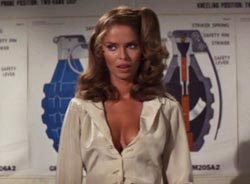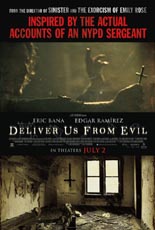
 Based on supposedly “actual accounts” that I do not believe for a second, Deliver Us from Evil casts Eric Bana (Hanna) as NYPD Sgt. Ralph Sarchie, who investigates a string of spooky shit. He and his partner, Butler (Joel McHale of TV’s Community, playing against type in a backwards ball cap and an Alice in Chains T-shirt), are left perplexed at the inhumanity they find, such as at The Bronx Zoo, where a woman quite literally has thrown her kid to the lions.
Based on supposedly “actual accounts” that I do not believe for a second, Deliver Us from Evil casts Eric Bana (Hanna) as NYPD Sgt. Ralph Sarchie, who investigates a string of spooky shit. He and his partner, Butler (Joel McHale of TV’s Community, playing against type in a backwards ball cap and an Alice in Chains T-shirt), are left perplexed at the inhumanity they find, such as at The Bronx Zoo, where a woman quite literally has thrown her kid to the lions.
It gives nothing away to say that the crimes are linked and grow increasingly twisted — like, kitty-on-a-crucifix twisted. It gives nothing away to say that for Sarchie, these unspeakable acts take a real toll on the ol’ home life with the preggo wifey (Olivia Munn, Mortdecai). It gives nothing away — in fact, you expect it — to say that satanic forces are at work. On that note, an unconventional priest (Edgar Ramírez, The Counselor) comes to the aid of Sarchie and Butler.
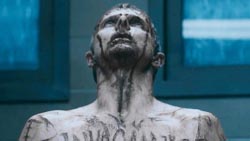 Remove the ensuing exorcism angle, and Scott Derrickson’s film exudes the feel of other true-crime dramas about Big Apple law enforcement — Serpico, The Super Cops, The French Connection — in a gritty adherence to reality, especially in portraying a police career as fraught with perpetual misery. The deeper the movie dives into demonic territory, however, the more I was reminded of 1990’s The First Power, that forgettable Lou Diamond Phillips vehicle of yore.
Remove the ensuing exorcism angle, and Scott Derrickson’s film exudes the feel of other true-crime dramas about Big Apple law enforcement — Serpico, The Super Cops, The French Connection — in a gritty adherence to reality, especially in portraying a police career as fraught with perpetual misery. The deeper the movie dives into demonic territory, however, the more I was reminded of 1990’s The First Power, that forgettable Lou Diamond Phillips vehicle of yore.
Despite Derrickson’s previous experience with scares (Sinister and The Exorcism of Emily Rose), Deliver Us from Evil arrives nearly empty-handed in that department. I say “nearly” because there’s this scene of a roly-poly owl stuffed animal that terrorizes Sarchie’s daughter by doing things it shouldn’t be able to do (read: move). And then there’s the soundtrack, which unloads a lot of tunes by The Doors, a band I can’t stand. In fact, The Doors’ music becomes a bona fide plot point, keeping the Jim Morrison estate awash in royalty payments. To my ears, that’s frightening. —Rod Lott

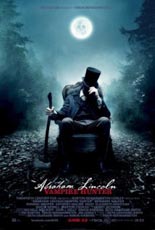
 Four score and seven years ago — or was it 2012? — two studio pictures, each budgeted around $65 million, portrayed our nation’s 16th president as a larger-than-life, all-American hero. Whereas Steven Spielberg’s
Four score and seven years ago — or was it 2012? — two studio pictures, each budgeted around $65 million, portrayed our nation’s 16th president as a larger-than-life, all-American hero. Whereas Steven Spielberg’s 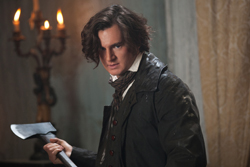
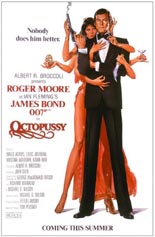
 What I remember most about seeing
What I remember most about seeing 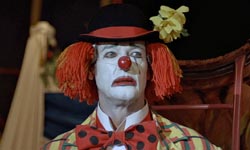
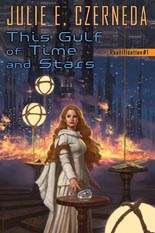
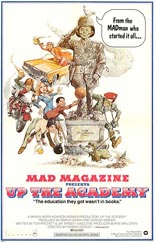
 After the unprecedented success of National Lampoon’s Animal House, it seemed only natural that the nation’s other most influential comedy magazine of the period would get into the movie game as well.
After the unprecedented success of National Lampoon’s Animal House, it seemed only natural that the nation’s other most influential comedy magazine of the period would get into the movie game as well. 